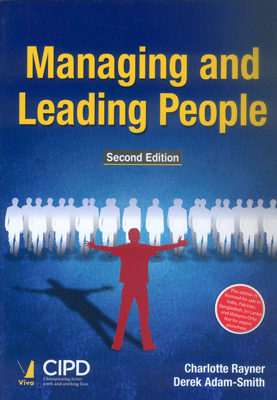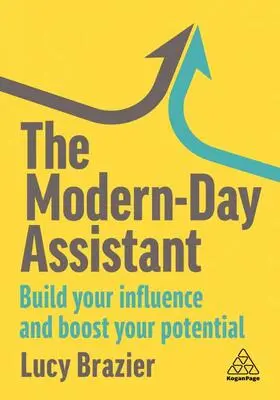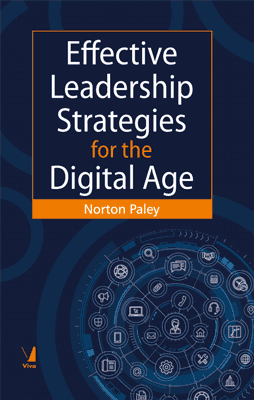Managing and Leading People, 2/e
Managing and Leading People, 2/e
₹625.50 ₹695.00 Save: ₹69.50 (10%)
Go to cartISBN: 9789385919121
Bind: Paperback
Year: 2016
Pages: 224
Size: 6.75 x 9.5 Inch
Publisher: Chartered Institute of Personnel and Development
Published in India by: Viva Books
Exclusive Distributors: Viva Books
Sales Territory: India, Nepal, Pakistan, Bangladesh, Sri Lanka
—Ann Pendleton, Senior Lecturer and Programme Leader for MA HRM and MBA, Bolton Business School
"It is pleasing to read, challenging in its style and can actually make studying for a qualification enjoyable. I think this is very important bearing in mind how many students are working, studying part time and need to find the motivation to open a book at the end of a long day at work. They have to want to read it and for this it has to be stimulating - this book hits that spot"
—Sue Shortland, Principal Lecturer in HRM, London Metropolitan Business School
Description:
This text has been designed specifically to cater for the Managing and Leading People and is closely aligned to the standards. It is also a suitable text for students on similar modules such as People and Organisations on wider business degrees.
Building on the success of the first edition, this revised and updated text reflects the most recent developments in management and leadership and adopts a more international perspective. Key topics include the strategic context, ethics and diversity, the psychological contract, motivation and reward, recruitment and selection and developing for the future.
Written in a clear and accessible way, Managing and Leading Peopledraws on academic theory and research, but balances this with case studies and real-world examples from a wide range of organisations. Further reading and discussion questions challenge and engage students, and a brand new companion website provides additional tutor support.
Target Audience:
This book is useful for undergraduate business students taking a HRM module.
Contents:
LIST OF FIGURES • LIST OF TABLES • ACKNOWLEDGEMENTS • NOTES ON THE EDITORS AND CONTRIBUTORS
CHAPTER 1: MANAGING AND LEADING PEOPLE IN HIGH PERFORMACE ORGANISATIONS
(Sarah Gilmore and Derek Adam-Smith)-Learning outcomes? Introduction • The nature and challenge of change • Triggers for change? • Organisational responses to change • Conclusion • Overview of the book's content and pedagogic features • Discussion questions • Explore further
CHAPTER 2: THE STRATEGIC CONTEXT (Richard Christy and Gill Christy)-Learning outcomes? Introduction • Organisational strategy and goals • Analysing the organisation's environment • Choosing a strategy • Making a strategy happen • Conclusion • Discussion question • Explore further
CHAPTER 3: EMPLOYEE INVOLVEMENT AND PATICIPATION: CONTEMPORARY THEORY AND PRACTICE (Emma Brown)-Learning outcomes • Introduction: Decision-making and employee involvement and participation • Collective and individualist issues • Defining employee involvement and participation • Levels of involvement and participation • Processes and forms of participation and involvement • Involvement and participation mechanisms • Conclusion • Discussion questions • Explore further
CHAPTER 4: LEADERSHIP (Gill Christy)-Learning outcomes • Introduction • Management or leadership? • Strategy and leadership • Management and leadership • Leadership: theoretical frameworks • Leadership: the research agenda • Conclusion • Discussion questions • Explore further
CHAPTER 5: ETHICS AND DIVERSITY IN HUMAN RESOURCE MANAGEMENT (Richard Christy and Emma Brown)-Learning outcomes • Introduction • Approaches to ethics • Organisations and people • The purpose of an organisation • Other influences on business ethics • Equal opportunities and ethics • Diversity management • Conclusion • Discussion questions • Explore further
CHAPTER 6: FLEXIBILITY, THE PSYCHOLOGICAL CONTRACT, AND EMPOWERMENT (Simon Turner)- Learning outcomes • Introduction • Performance • Flexibility • The psychological contract • Implications for human resource management • The flexible firm and contingent workers • Old and new psychological contracts Empowerment • Conclusion • Discussion questions • Explore further
CHAPTER 7: PERFORMANCE MANAGEMENT, MOTIVATION AND REWARD (Gary Rees and Mark Lowman)-Learning outcomes • Introduction to performance management • Perspectives on performance management • The nature of performance • Factors affecting performance • What happens after performance management? • How is performance improved? • The future of performance management • Conclusion • Discussion questions • Explore further
CHAPTER 8: JOB DESIGN (Ray French)-Learning outcomes • Introduction • Definitions and frameworks • Business process re-engineering (BPR) • Goal-setting and job design • Conclusion • Discussion questions • Explore further
CHAPTER 9: RECRUITMENT AND SELECTION (Ray French and Sally Rumbles)-Learning outcomes • Introduction • Definitions • Approaches to recruitment and selection • The resourcing cycle • Validity in recruitment and selection • And so, what about interviewing? • Recruitment costs • Rhetoric and reality: the case of small and medium-sized enterprises • A contingency approach • Organisational culture • Conclusion • Discussion questions • Explore further
CHAPTER 10: LEARNING, TRAINING AND DEVELOPMENT: CREATING THE FUTURE? (Sarah Gilmore and Gary Rees)-Learning outcomes • Introduction: Responding to change and creating the future • The need for skills and development • Definitions of learning, training and development • The systematic training cycle • The importance of learning and learning transfer • The politics and practices of evaluation • Conclusion • Discussion questions • Explore further
CHAPTER 11: CONCLUSION (Charlotte Rayner)-Learning outcomes • Pressure, pressure... • Human Resources shares the pressure • Knowledge workers • Workers and managers in ?standard? jobs • Outsourced workers • The conundrums • Conclusion • Explore Further
APPENDIX: MAP OF ClPD REQUIREMENTS • REFERENCES • INDEX
About the Authors:
Charlotte Rayner is Professor of Human Resource Management at Portsmouth Business School. Derek Adam-Smith is Head of the Human Resource and Marketing Management department at Portsmouth Business School.
Derek Adam-Smith is Head of the Department of Human Resource and Marketing Management at the University of Portsmouth Business School. He was formerly a Principal Lecturer in Employment Relations in the same institution. He has researched and published articles about HIV and AIDS at work, the National Minimum Wage, and the effects of the Working Time Regulations.







